Low-maintenance roses that don’t need to be sprayed with chemicals? Hardy roses that withstand winter freezes and drought? Drought-tolerant roses that bloom like crazy even in adverse conditions? Is this even possible?
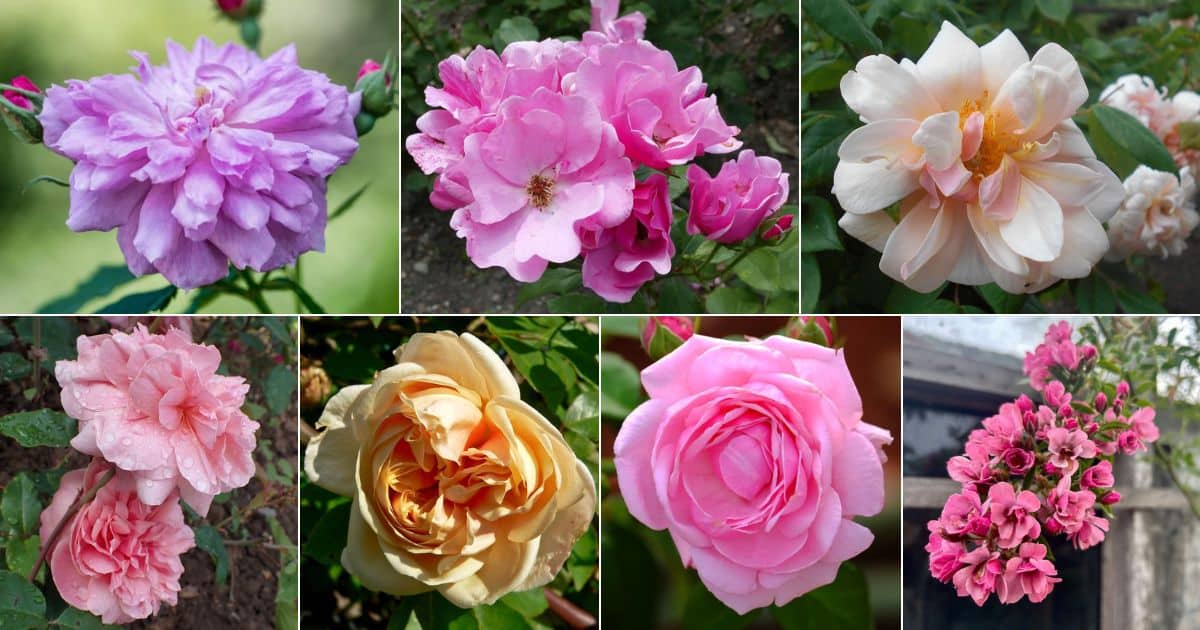
Yes, it is. Earth-KindⓇ roses have been extensively tested to withstand these conditions and come through blooming beautifully. Read on for a comprehensive list of 23 ultimate low-maintenance roses.
Jump to:
A New Emphasis on Environmentally-Friendly Roses
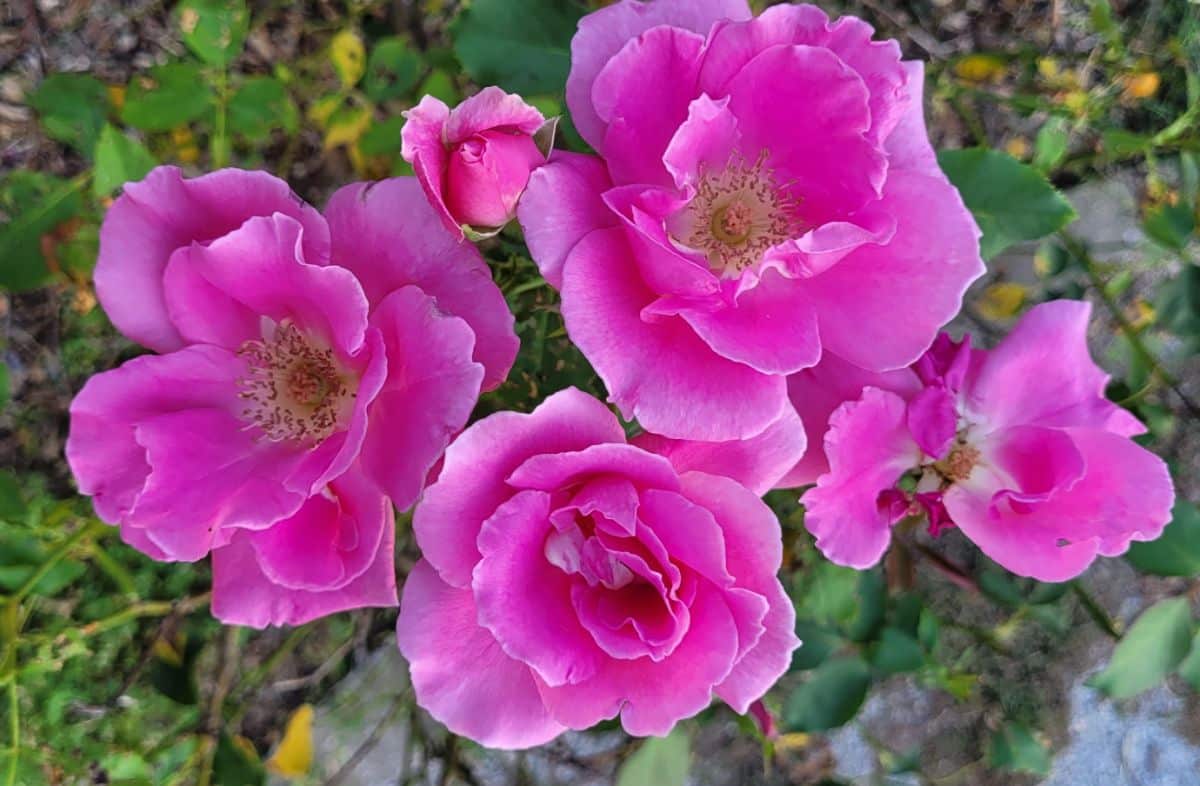
After decades of always watering and spraying fussy hybrid teas, gardeners and homeowners have been abandoning roses for more drought-tolerant and disease-tolerant plants. A new shift to low-maintenance and more environmentally friendly landscapes left roses behind by the score.
Then Knock Out roses burst onto the rose scene with disease-resistant plants that didn’t need fertilizing or spraying, outselling even the widely beloved Peace rose.
Ever since, rose breeders have been concentrating on creating Landscape roses, a category of roses that have bred-in resistance to diseases and insects – developing roses can be planted in the landscape and left alone and look gorgeous.
The Earth-Kind Roses Program
The Earth-Kind program was started by horticultural specialists at the Texas Agrilife Extension Service in order to address four challenges facing homeowners and landscape professionals:
- The swiftly growing need to conserve water;
- The overuse and abuse of commercial fertilizers;
- The abuse and misuse of pesticides;
- The need to keep organic waste (leaves and branches) out of our landfills.
In the Earth-Kind program, universities and communities go in together to research and create a long list of rose cultivars that adapt well to conditions across different environments and areas. Then, they research why these roses are able to adapt so well and grow these roses in trial gardens.
How Earth-Kind Roses are Evaluated
Earth-Kind roses must have all of these traits:
- Excellent landscape performance
- Outstanding tolerance of/resistance to pests and diseases
- Rosebushes with attractive form
- Rose blossoms that look amazing
- Flowering through the growing season
- Able to withstand local weather with aplomb
- Grown on own roots
- Tolerant of sand, loam, clay, and alkaline soils
- Drought-tolerant after the first year
- A healthy root system with great nutrient uptake.
… and these roses do all this without supplemental water (after the first year) and with no pruning, insecticides, fungicides, or fertilizer. The roses receive 3 inches of plant-based compost and 3 inches of organic mulch, both of which are added as the roses are being planted.
It’s a commonly understood fact in the rose world that a rose that grows beautifully in one area might be a complete dog in a different place. That’s why the Earth-Kind research has spread worldwide.
This research has expanded to 25 states and 4 countries – Bermuda, Canada, India, and New Zealand. This will help to account for regional differences. Northern Earth-Kind rose trials test for cold-hardiness in the far North, zones 3 and 4. Field trials in Odessa, Texas, test for saline tolerance by giving roses irrigation water with high salinity.
Only superior performers earn Earth-Kind designation.
Here are the Earth-Kind Roses from the Texas AgriLife Extension Service, with a brief overview of each rose.
Dwarf Shrubs
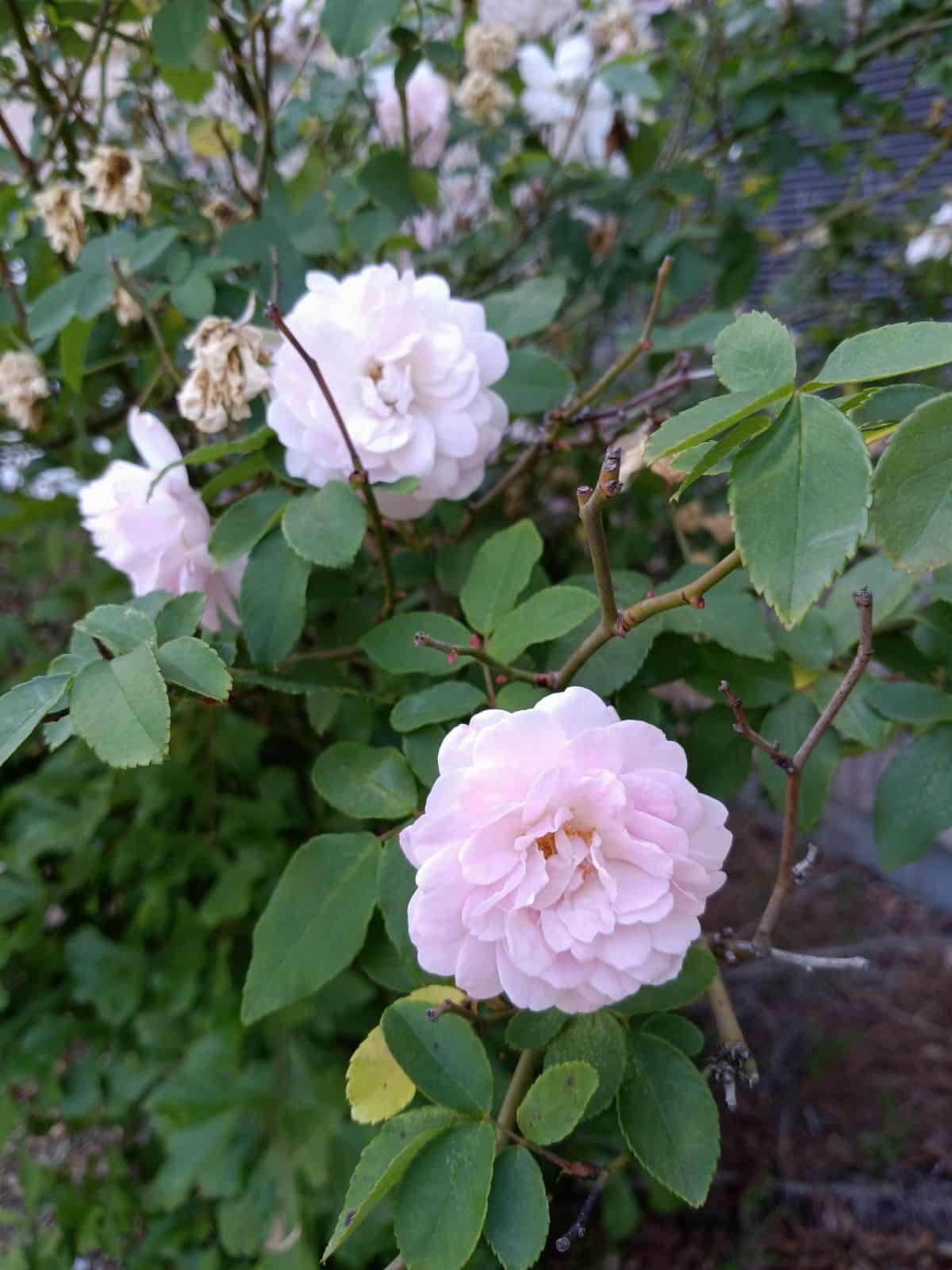
| Name: | Marie Daly (2002) |
| Class: | Polyantha |
| Zones: | 6a and up |
| Size: | 3 to 4 feet tall and wide |
| Fragrance: | Sweet musk |
Sport of the beloved old garden rose Marie Pavie
Named for the first African American woman to earn a doctorate in chemistry, this rose sports clusters of small pink blossoms, with successive flushes of deliciously fragrant blooms all through the growing season. During times of excessive heat, the flowers fade to white.
Excellent disease resistance and is also resistant to pests, especially spider mites. Tolerates alkaline soils. Marie Daly is mostly thornless, making it a great choice for places where children might play.
The Marie Daly polyantha rose is a true winner. It fits well into the small landscape, especially with its delicious fragrance. Great for mass plantings as a low hedge and does well in a container. Space 5 feet apart on centers.
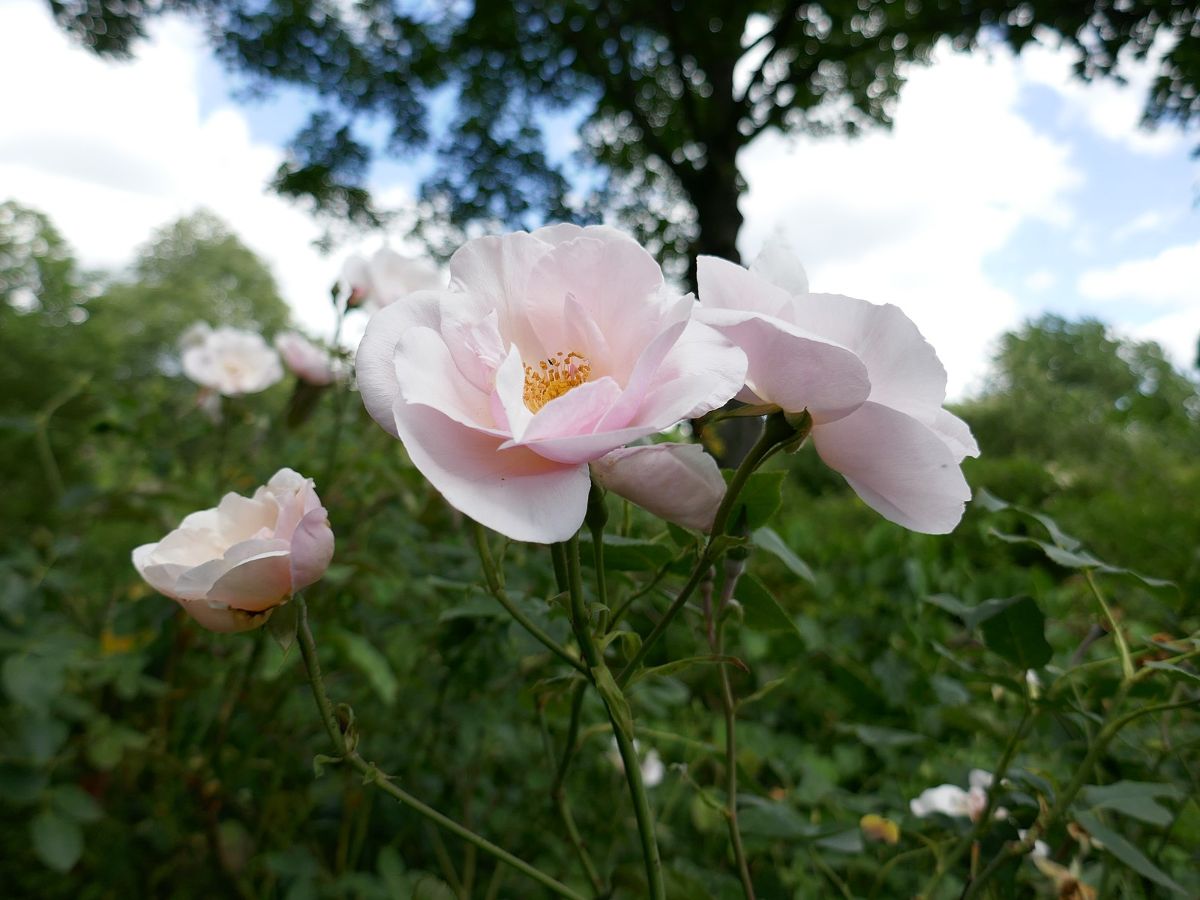
| Name: | Souvenir de St. Anne’s (1950) |
| Class: | Bourbon |
| Zones: | 6-11 |
| Size: | 3 to 4 feet tall and wide |
| Fragrance: | Cinnamon/clove fragrance |
Sport of Souvenir de la Malmaison
This rose sports semi-double blush-pink flowers that fade to pale pink. Outstanding strong fragrance – probably the most fragrant of all the Earth-Kind roses.
This rose, a sport of Souvenir de la Malmaison, was discovered in St. Anne’s Park, Dublin. (A sport is part of a plant that’s different than the rest of the plant – in this case, the original rosebush that bears flowers with 70+ petals suddenly grew a stem with flowers that had 9-16 petals.)
Blooms all through the growing season with translucent, pale-pink petals that almost glow. Excellent for mass plantings and borders, but also makes a fine container plant. Space 5 feet apart on centers.
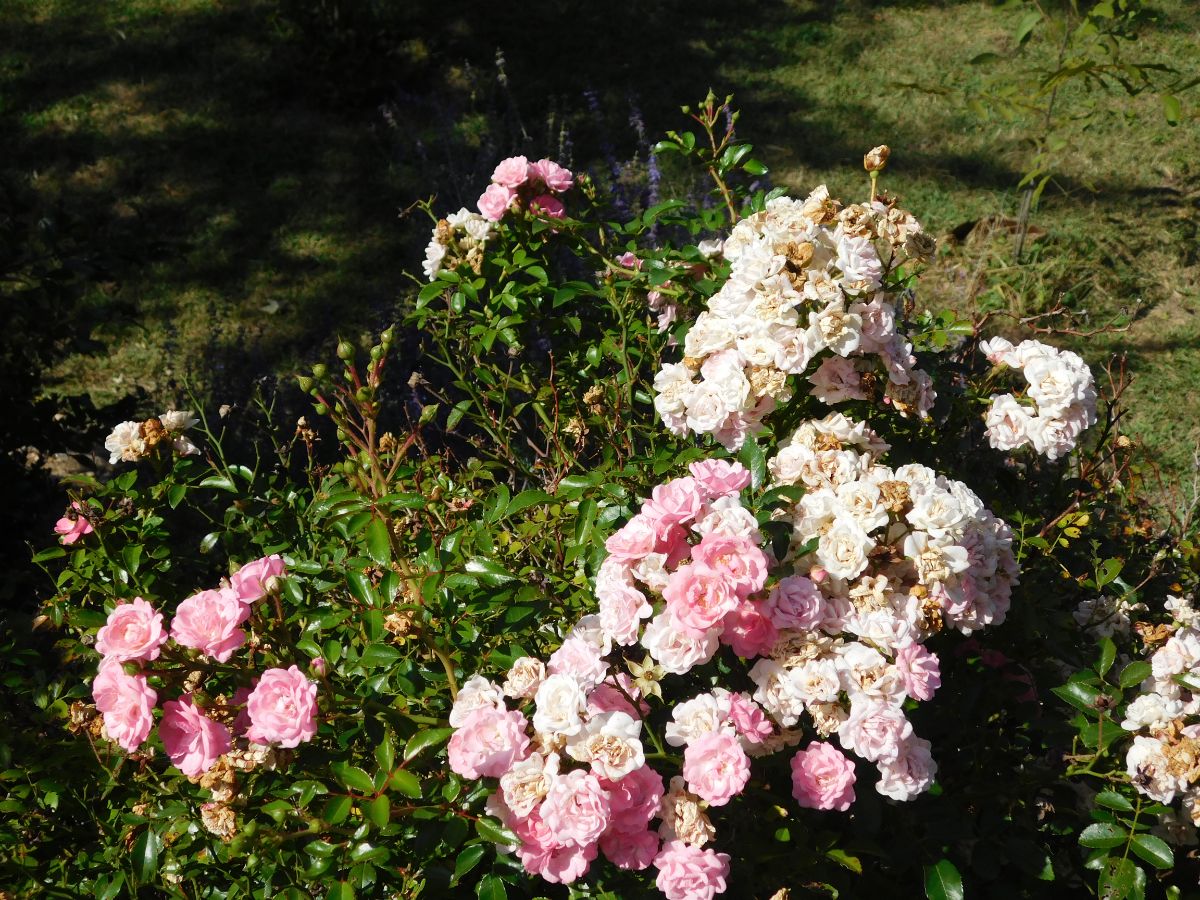
| Name: | The Fairy (1932) |
| Class: | Polyantha |
| Zones: | 4b to 9b |
| Size: | 2 to 4 feet tall and wide |
| Fragrance: | Mild apple fragrance |
Also known as Perle Rose.
The Fairy is a famous, compact rose that looks dainty but is as tough as nails. Its clusters of bright pink blossoms cover the plant all summer with cheerful flushes of flowers, fading to white as they age.
The long-lasting flowers on The Fairy have only a light fragrance, but they attract butterflies and other pollinators.
Their glossy leaves are resistant to powdery mildew, blackspot, and other fungal diseases. It will catch powdery mildew along the California coast, but nobody is perfect (and that goes for roses, too.)
Like actual fairies, these are beautiful – and their little thorns will snag you if you’re not careful. It’s a winner in any garden – a long-lived, tough, and dazzling rose.
Can be grown as a container rose, a ground cover, or a small hedge.
Small Shrubs

| Name: | Caldwell Pink (breeding date unknown) |
| Class: | Polyantha |
| Zones: | 5b through 10b |
| Size: | 3 to 6 feet tall, 3 to 12 feet wide |
| Fragrance: | Varies from none to strong |
Also named Pink Pet.
Sometimes nicknamed the “Summer Carnation Rose,” Caldwell Pink was a found rose that was collected by a Texas rose rustler and sold in commerce in the 1980s. Some rosarians think it might be a rose called Pink Pet.
Though this rose blooms relatively late in the season, the show is worth the wait. It’s one of the most generous roses to blossom, with tidy, pink flowers that bloom non-stop. The rosebush is dense and shrubby, and it’s one of few roses that has foliage that turns a rich red color in the fall.
Blackspot and powdery mildew issues are not a concern with this rose – it resists them all. Caldwell Pink has excellent disease and heat tolerance and can tolerate alkaline clay soils.
Use as a small cute shrub or plant in lovely pink and white drifts and masses.
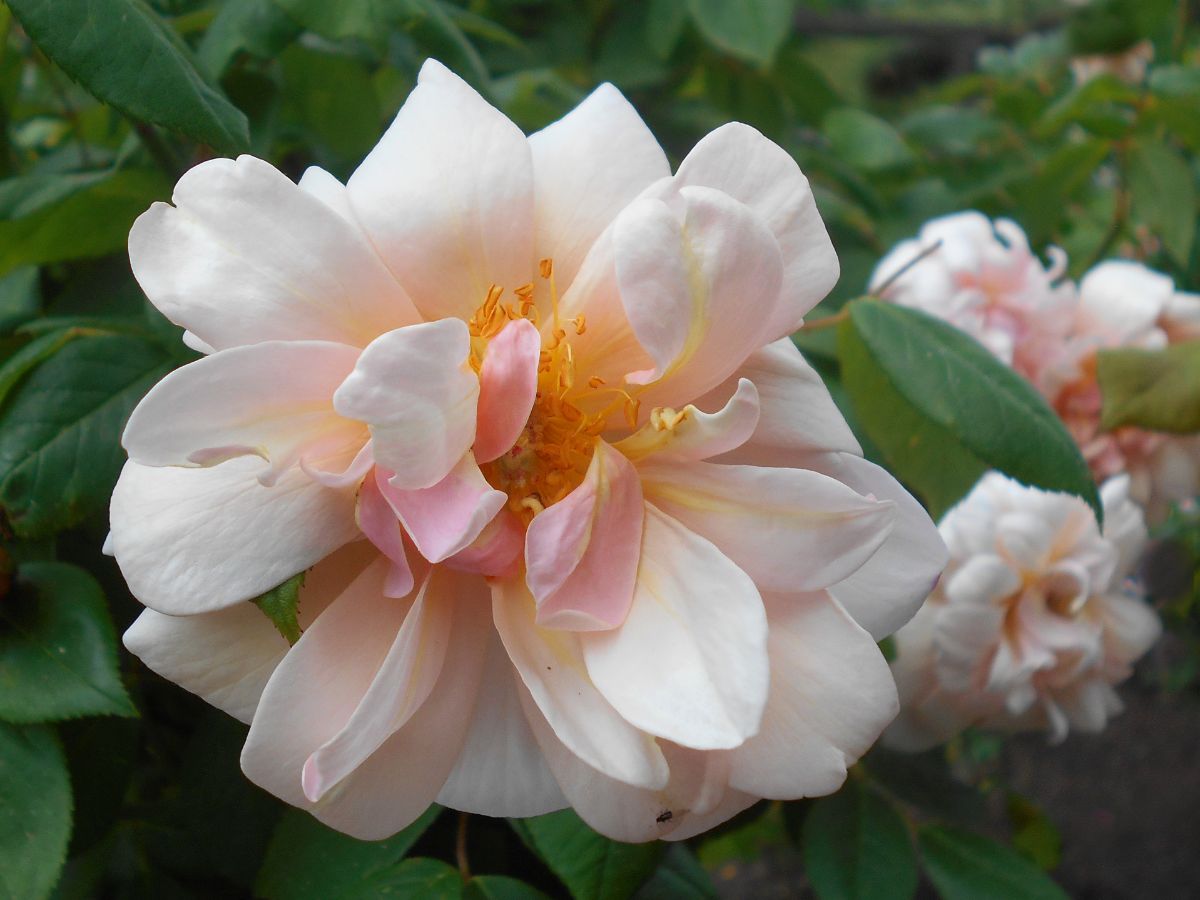
| Name: | Perle d’Or (1883) |
| Class: | Polyantha |
| Zones: | 6-9 |
| Size: | 3 to 6 feet tall and 3 feet wide; plant 6 feet apart on centers |
| Fragrance: | Strongly fragrant |
Sometimes called Yellow Cecile Brunner or The Buttonhole Rose.
Perle d’Or (French for Pearl of Gold) is an old favorite in rose gardens dating from 1884. This durable rose has unique blooms – apricot blended with light pink undertones, aging to white. What’s more, the outer petals fold back as the rose opens, making it look like a golden-pink pompom.
These fragrant blooms keep popping out in flushes through the whole growing season.
Perle d’Or is resistant to drought and can put up with alkaline clay soil and excessive heat. It’s one of those old roses that will grow in abandoned houses and in unkempt cemeteries, flourishing in spite of years of neglect.
It’s good for high-traffic areas because it’s also mostly thornless and because the remarkable non-stop blossoms are deliciously fragrant (though some people have reported non-fragrant roses on this rosebush as well). It’s great for containers as well.
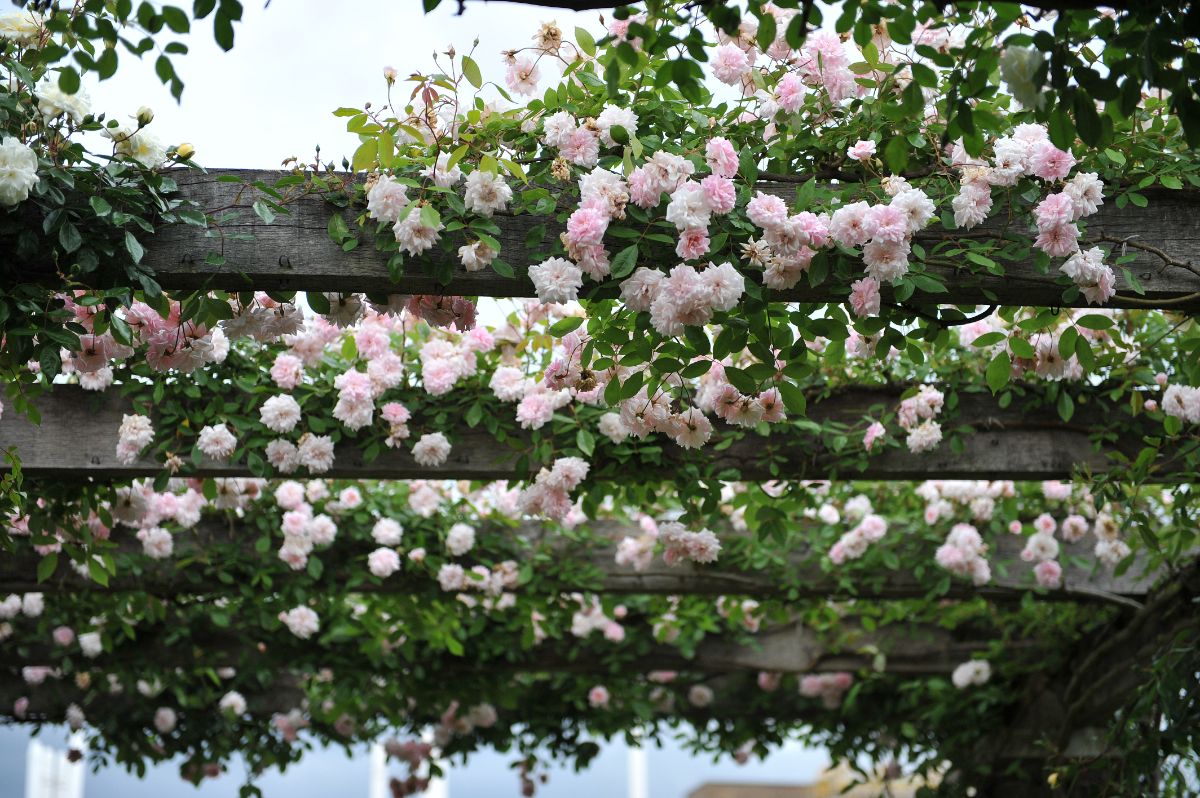
| Name: | Cécile Brünner (1881) |
| Class: | Polyantha |
| Zones: | 5-9 |
| Size: | 4 feet tall, 3 feet wide, plant 5 feet apart on centers |
| Fragrance: | Moderate apple fragrance |
Also called Mme. Cecile Brunner, Mignon, and the Sweetheart Rose.
This perpetually popular rose was hybridized by Marie Ducher, the widow of Claude Ducher. She bred Cecile Brunner, but when she died, her son-in-law marketed the rose, and he is often given credit for breeding this lovely rose, even though Marie did the actual breeding work.
A vigorous little rose that will pop up from a cutting and grow. The buds look like miniature tea roses and open into a little pompom. The first flush of flowers in spring looks great, and the second flush in early summer is magnificent! She sends up long shoots in branching stalks and covers herself with tons of little pink flowers that turn white as they age.
Once Cecile Brunner gets established, she doesn’t need a lot of water or fertilizing. If she looks a little pale, give her a dose, but once she rights herself, she won’t need it. A wonderful low-maintenance rose.
Medium Shrubs
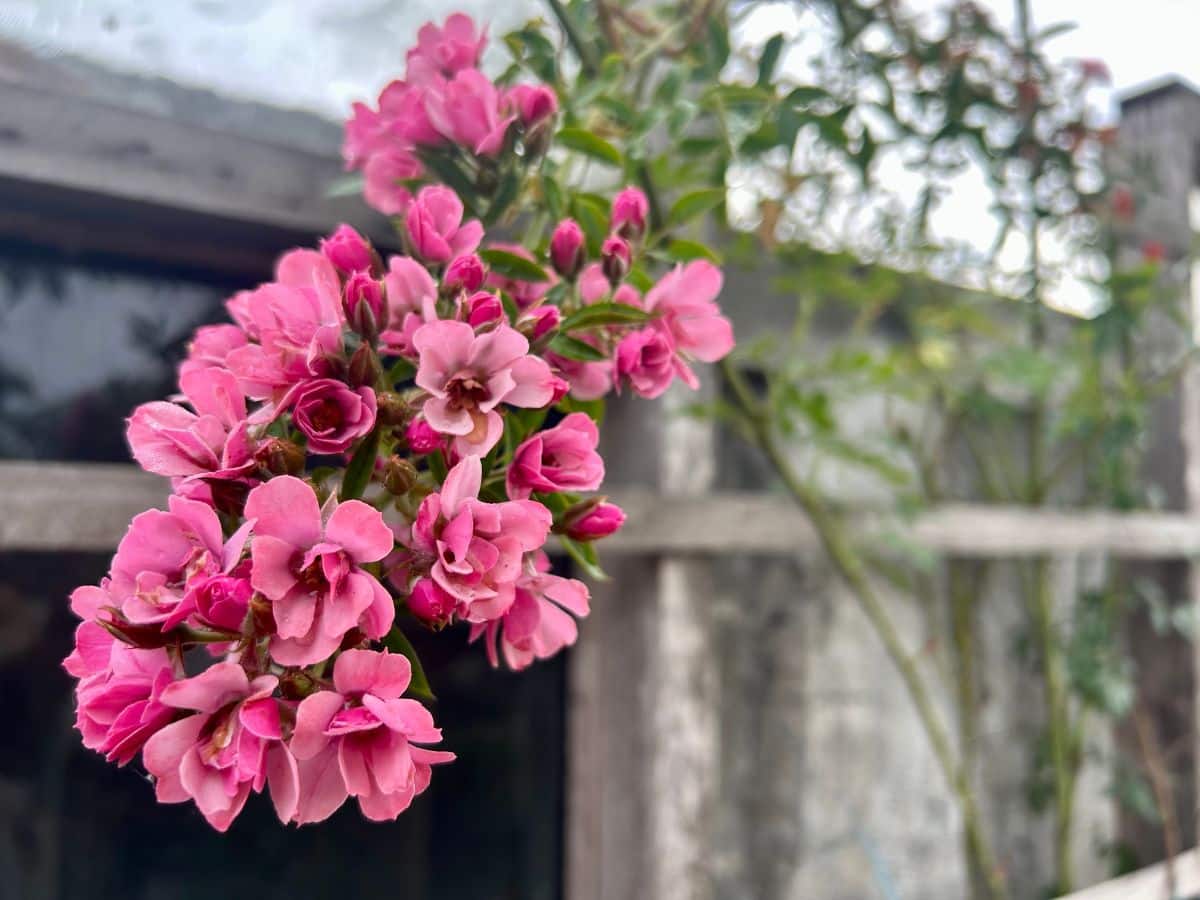
| Name: | ‘Spice’ (Breeding date unknown) |
| Class: | China or tea rose |
| Zones: | 7-9 |
| Size: | 5 feet tall, 4 feet wide, plant 6 feet apart on centers |
| Fragrance: | Spicy! |
One of the “Mystery Roses” from Bermuda. (The island has many, many old roses planted by colonists in the 1800s, whose original names are now unknown.) Some think Spice might actually be Hume’s Blush Tea-Scented China rose (bef. 1808) or Caroline (a tea rose from 1833)
A compact antique rose with the most exhilarating fragrance; Spice produces blush-pink, double flowers that cover the rosebush in waves through the whole growing season, which turns white in the heat. Flowers are borne on droopy stems. Satiny petals in the flowers with large petals guarding smaller petals. Reliable rebloom all through the growing season. This healthy, vigorous rose is a drought-tolerant evergreen in the South and a delight because of its delicious fragrance.
Suitable for cuttings; can be grown in containers.
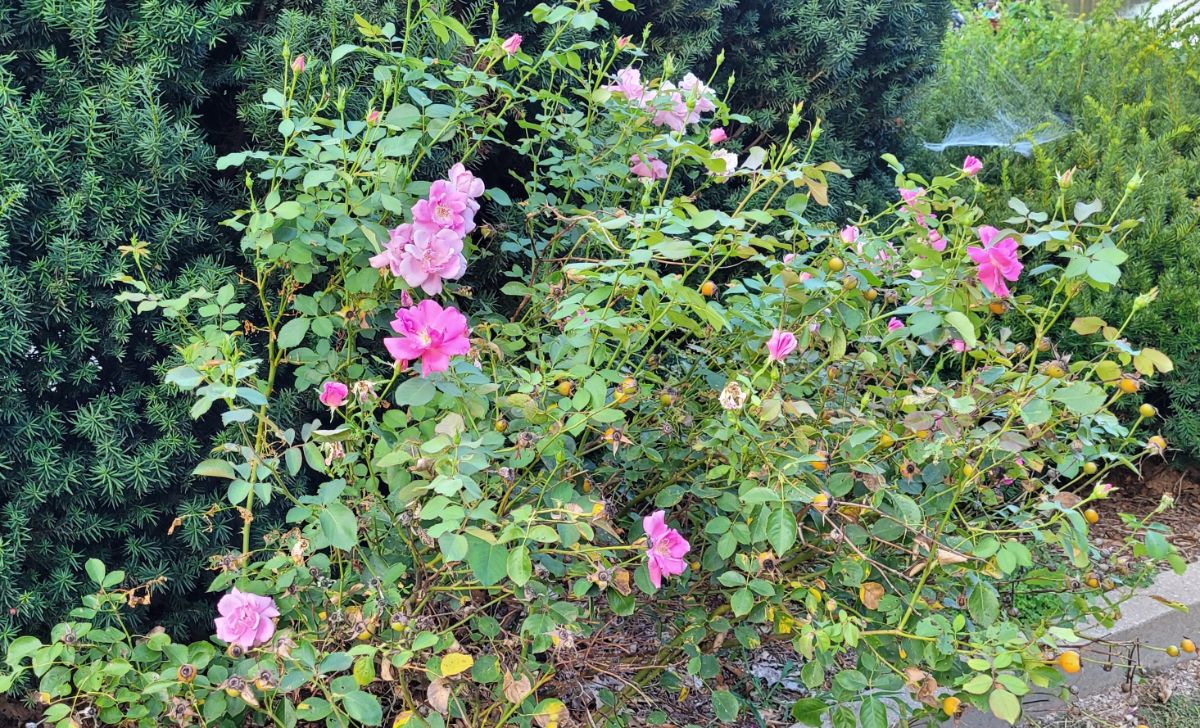
| Name: | Carefree Beauty (1977) |
| Class: | Shrub |
| Zones: | 4-9 |
| Size: | 4 to 6 feet tall and 4 feet wide. Plant them 7 feet apart on centers |
| Fragrance: | Moderate, sweet fragrance |
Also known as Katy Road Pink.
Carefree Beauty is the first real low-maintenance rose I met when I was taking care of 300 roses in a public rose garden. These never needed spraying, rarely needed watering, and I didn’t even have to cover them with a bunch of mulch in the fall because they were that hardy.
Griffith J. Buck of Iowa State University bred over 80 named roses that were hardy to -20 below and didn’t need fungicides or pesticides to thrive. Carefree Beauty was one of his most popular roses, producing pink fragrant flowers with a carefree air on large shrubs that look great in a mass planting and take care of themselves.
The large flowers are bright pink, often with a little stripe of white near the center and golden bosses in the center of the rose.
Carefree Beauty is unsurpassed as a no-spray garden rose and as one of the best truly carefree shrub roses.
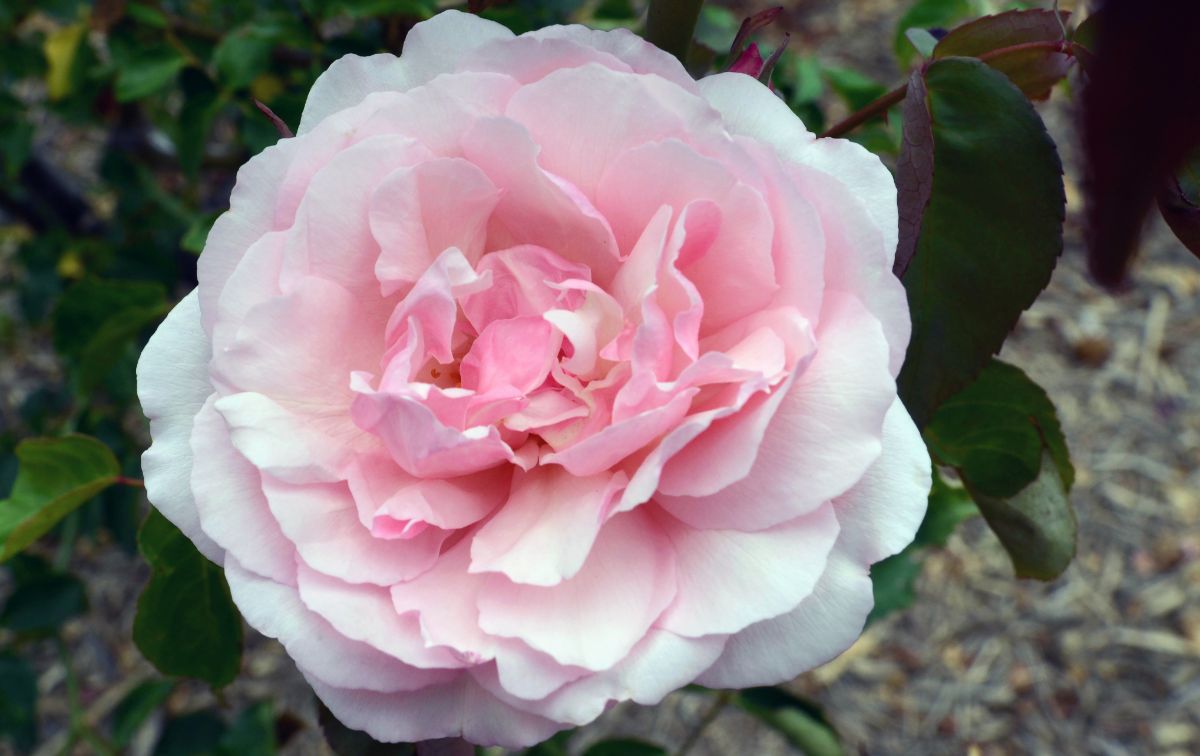
| Name: | Duchesse de Brabant (1857) |
| Class: | Tea |
| Zones: | 5b-11 |
| Size: | 3 to 6’ tall, 4’ wide, plant 6’ apart on centers |
| Fragrance: | Delightfully strong tea fragrance! |
Also called Bella Helena, Comtesse de Labarthe, Countess Bertha, and The Shell Rose.
Duchesse de Brabant was President Theodore Roosevelt’s favorite rose. He often wore this rose in his buttonhole. Like Teddy, the rose is a vigorous rough rider.
This old tea rose features large, fully double-cupped blooms of translucent pearl pink with yellow highlights. The rose is covered with nodding blossoms that look like tulips, blooming in flushes through the growing season.
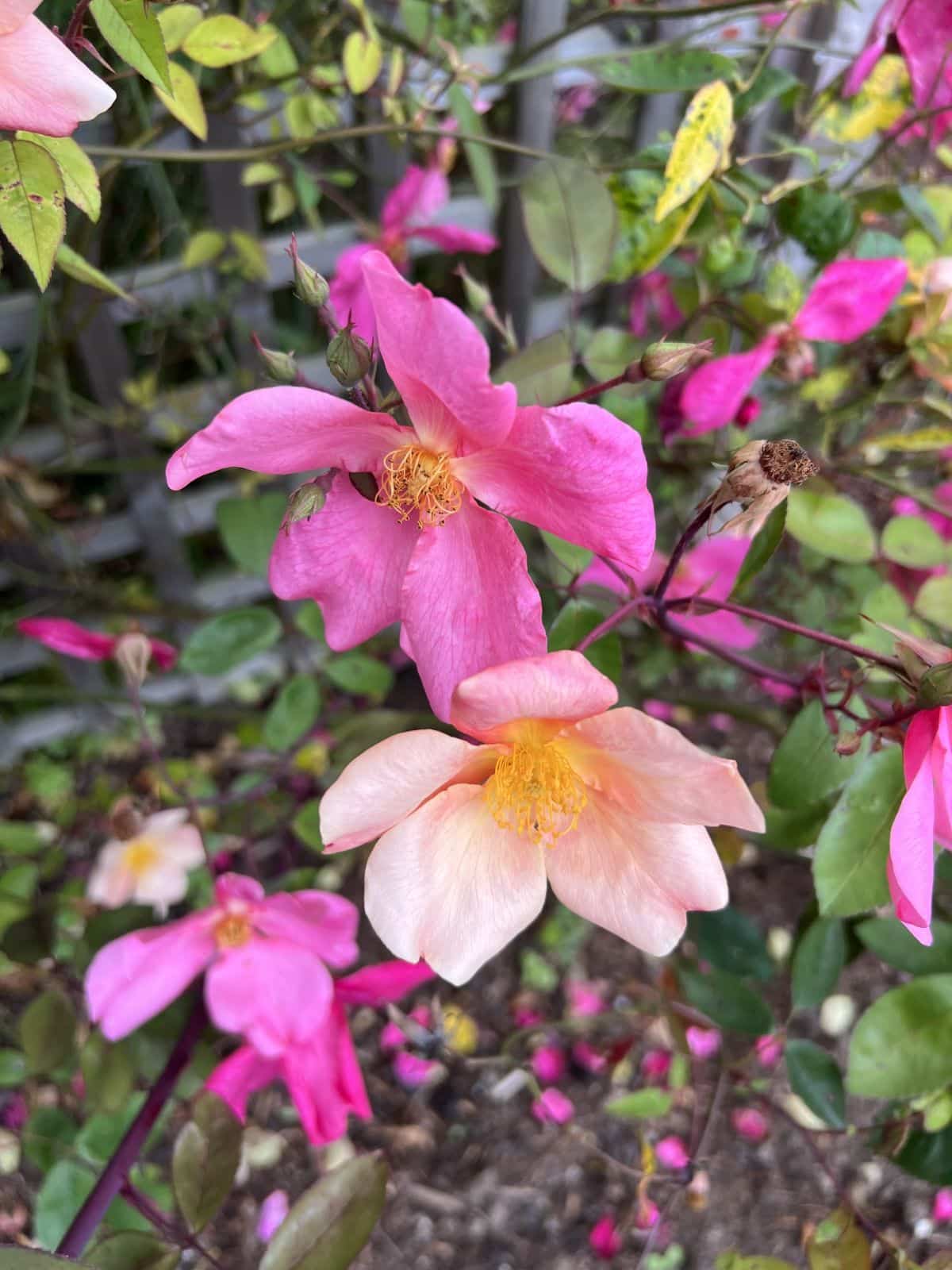
| Name: | Mutabilis (before 1894) |
| Class: | China/Bengale |
| Zones: | 7b through 10b |
| Size: | Grows 6 feet tall and wide – and larger |
| Fragrance: | Mild fragrance |
Also known as Bian Se Yue Ji, Butterfly Rose, Tipo Ideale, Rosa chinensis mutabilis, Rosa x odorata ‘Mutabilis’.
A very unusual, colorful China rose. A Swiss botanist found this remarkable rose growing in a park on the Prince of Angera’s island estate in Italy, and the prince gave it to him as a gift. And what a gift this rose is!
The blossoms open with yellow petals – which transition to orange, then pink, then scarlet. It’s like having several different kinds of roses on one rosebush – a real feast for the eyes. With all the multicolored roses on it, Mutabilis looks as if it’s covered with butterflies.
Give Mutabilis plenty of space to stretch out. This rose works well as a hedge or mass planting.
Mutabilis can survive neglect, disease, and heat and still come through looking great. Powdery mildew won’t be a problem for this rose.
It will need winter protection in zone 6 and north of there. Mulch it well and spray it with an anti-transpirant in late fall to help it overwinter.
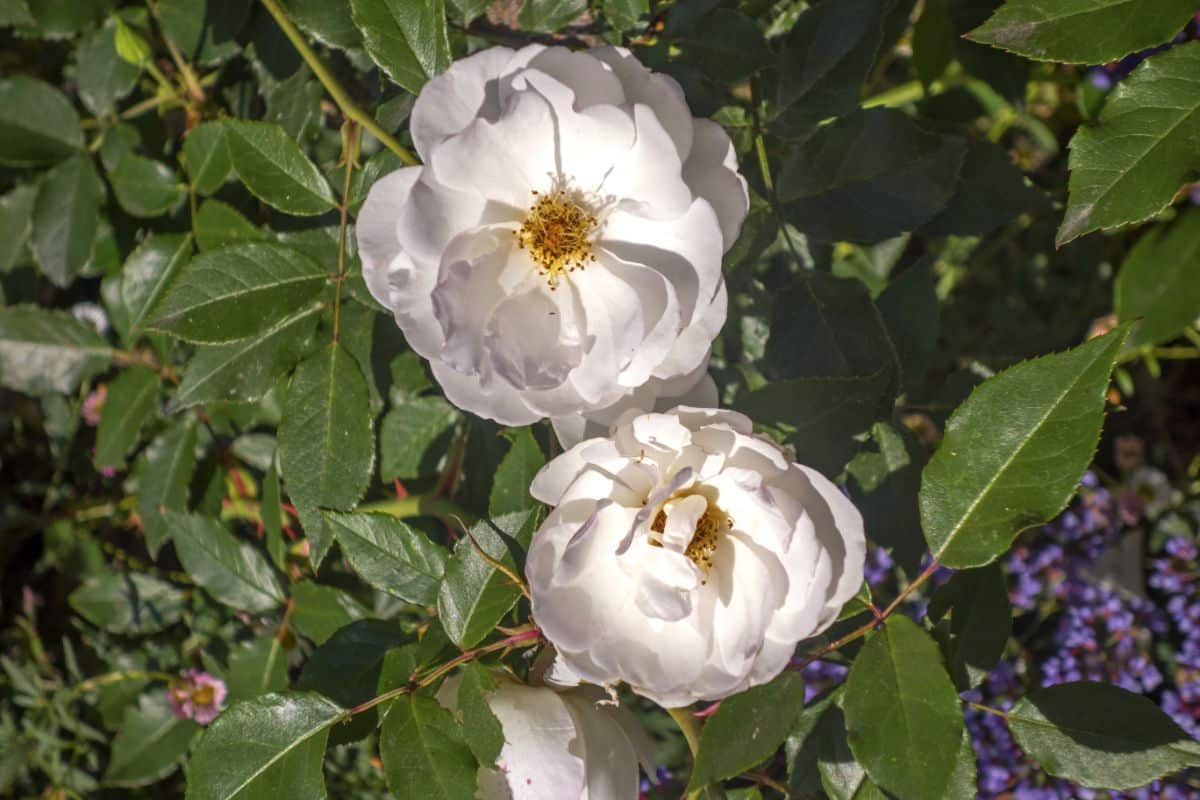
| Name: | Ducher (1869) |
| Class: | China/Bengale rose |
| Zones: | 7b to 10b |
| Size: | 2-5 feet tall and wide (60-150 cm) |
| Fragrance: | Moderate fragrance |
Fresh ivory blooms with a hint of pink and a nice, lemony fragrance. It starts blooming early in spring and is often one of the first roses to do so, and blooms exuberantly until frost. Blooms are a little small when the rose is young, but once it’s established, the flowers grow larger and quartered. The flowers drop off after they’re finished blooming.
Ducher makes an ideal container plant. This knee-high plant sports striking foliage with red stems; very disease-resistant. An elegant growth habit and very clean. Does well in climates where weather and temperatures go to extremes, though the flowers will fry quickly when temperatures get hot. The rose will get blackspot, but it’s not debilitating. Tolerates heat, drought, and poor soil. It will need winter and wind protection north of zone 7 because it will die back, but it springs back up from the roots every spring.
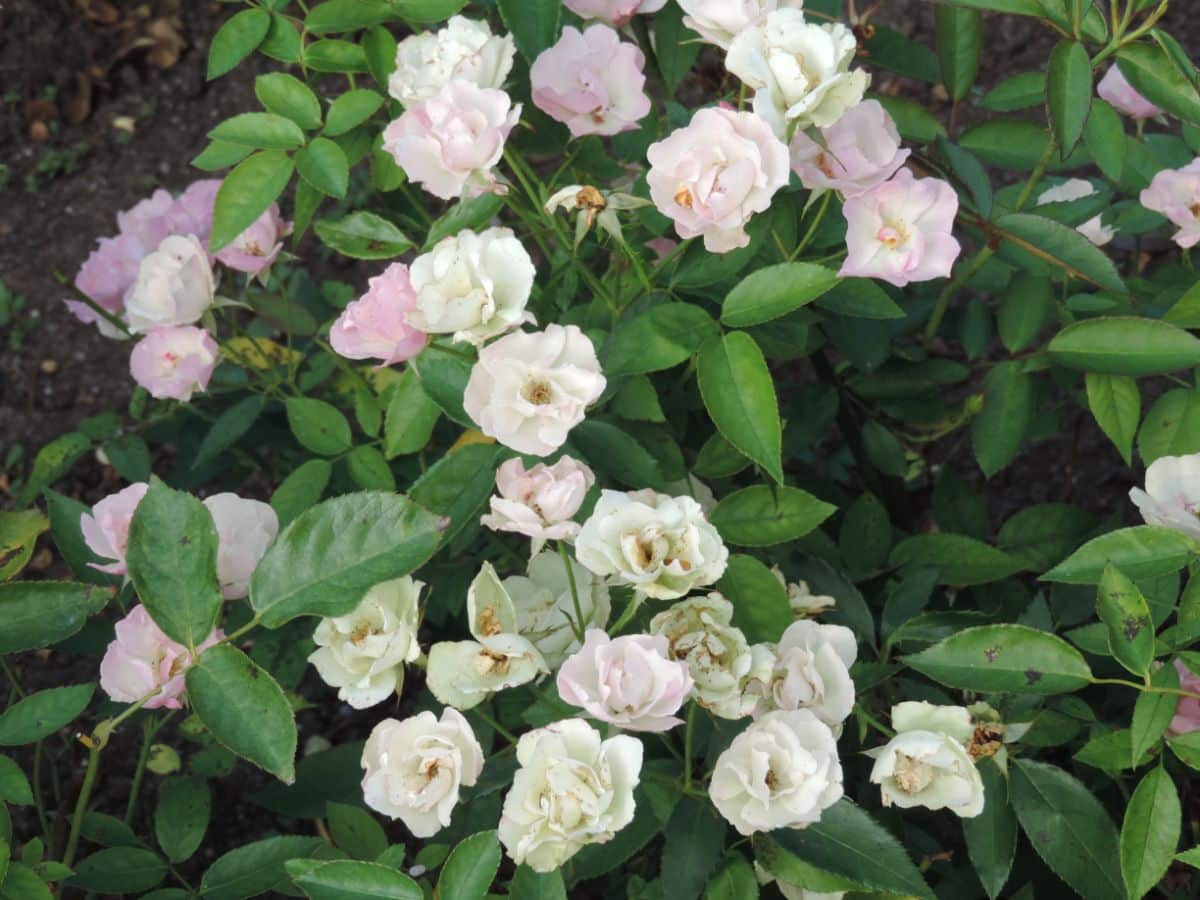
| Name: | La Marne (1915) |
| Class: | Polyantha |
| Zones: | 5b through 9b |
| Size: | 4 to 6 feet tall |
| Fragrance: | Mild |
Named for the First Battle of the Marne, a hard-fought WWI battle in which the French and British armies pushed back the German advance 30 miles from Paris.
La Marne is a lovely polyantha rose. Its ruffled, light-pink flower cups fade to white, massed in loose, showy clusters. An early spring bloomer, this rose reblooms heavily through the growing season and is very reliable. It also features glossy, reddish-green foliage that is very disease-resistant and mildew-proof.
La Marne is the perfect hedge rose and is also good for mass plantings where you need a great blaze of color.
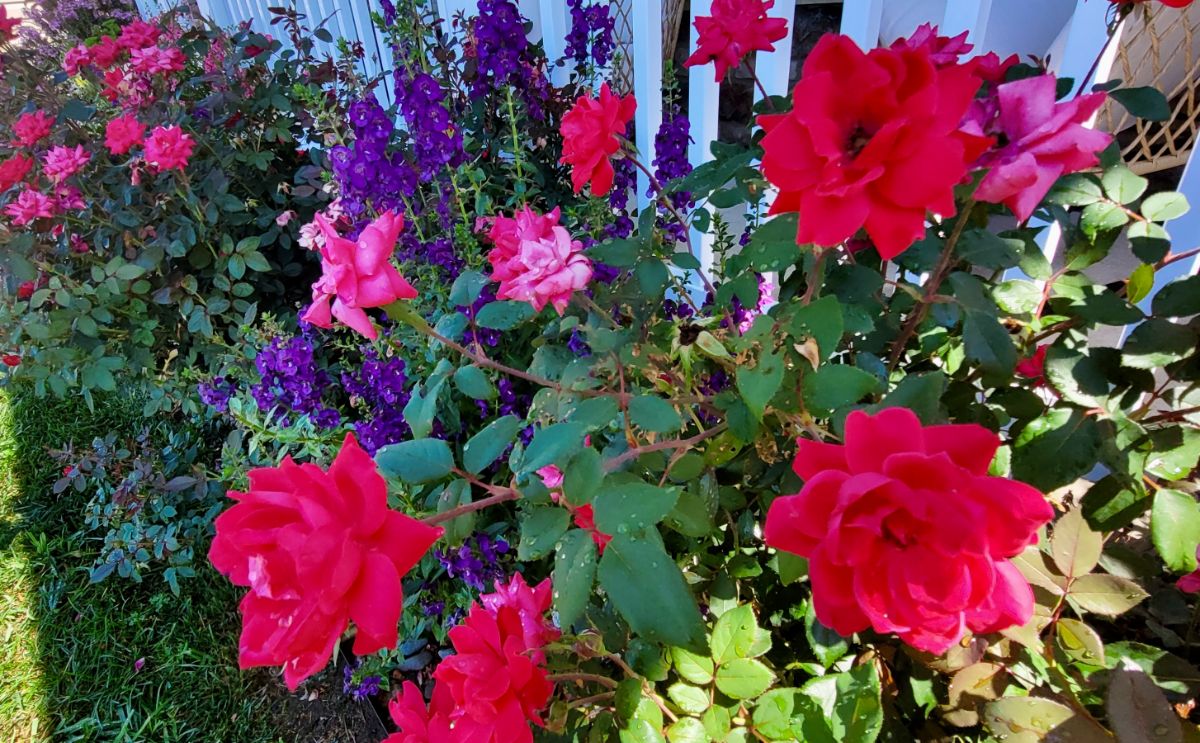
| Name: | Knock Out (1999) |
| Class: | Shrub |
| Zones: | 4b-9b |
| Size: | 2 to 4 feet tall, 3 to 4 feet wide |
| Fragrance: | Minimal |
Did you hear about the rose breeder wanted to make the ultimate disease-resistant rose? William Radler picked diseased rose leaves off his plants, put them into a blender, and made slurry out of them so he could spray those diseases on his roses. The most disease-resistant roses were used in his breeding program. That’s how we got the wildly popular Knock Out rose, which changed the whole rose industry for the better.
Knock Out is a continuous blooming, low-maintenance rose. Diseases bounce off of its glossy green foliage. It passed the Earth-Kind trial garden tests with flying colors.
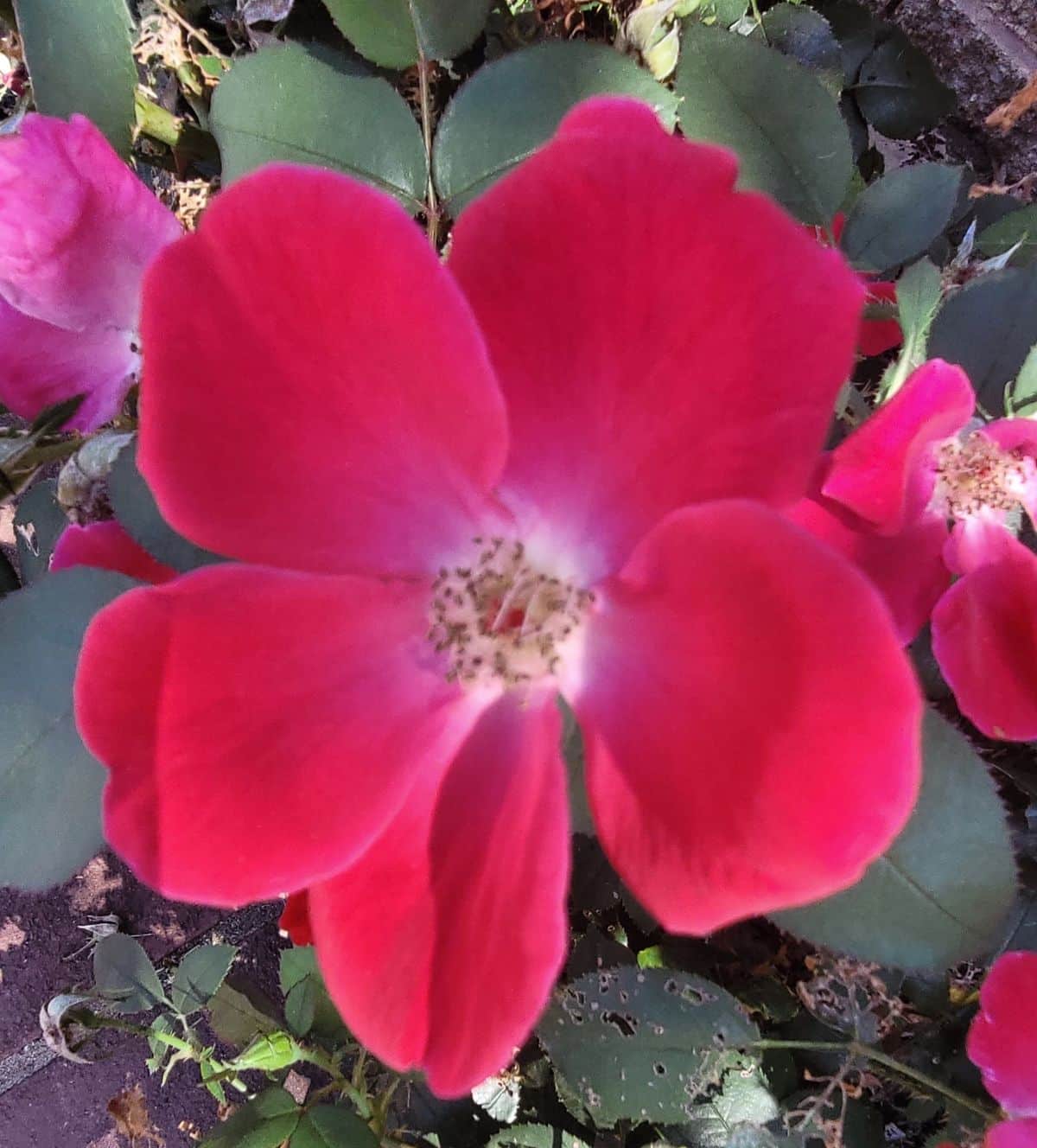
Knock Out was the winning rose for the Southern United States region of all 23 Earth-Kind rose cultivars. It’s little wonder that it’s the most widely sold rose cultivars in the world.
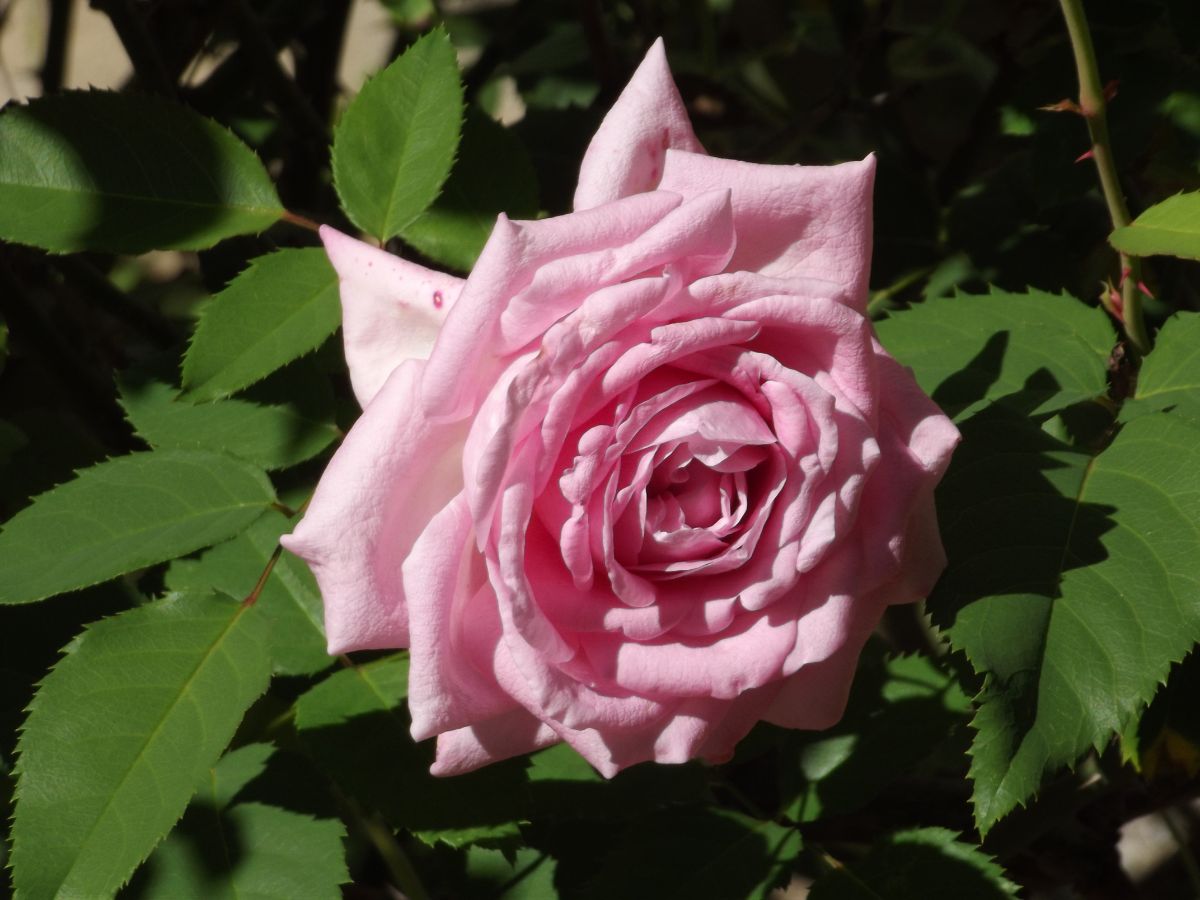
| Name: | Belinda’s Dream (1992) |
| Class: | Shrub |
| Zones: | 5-11 |
| Size: | 3 to 6 feet |
| Fragrance: | Delicious fragrance |
Belinda’s Dream is a cross between Tiffany and Jersey Beauty. The scent clearly comes from Tiffany, which is one of the most richly-scented hybrid tea roses. The flowers, too, are a dream, with raspberry-pink petals and large blooms that open to four-inch flowers.
Belinda’s Dream has few disease and pest problems on its glossy, dark-green foliage. It’s cold-hardy, drought-tolerant, vigorous, and doesn’t need spraying. One drawback is that if you live in a humid place with lots of dew, the flowers will ball up and rot before they can open. It’s a common problem with many large flowers with lots of petals in a humid climate.
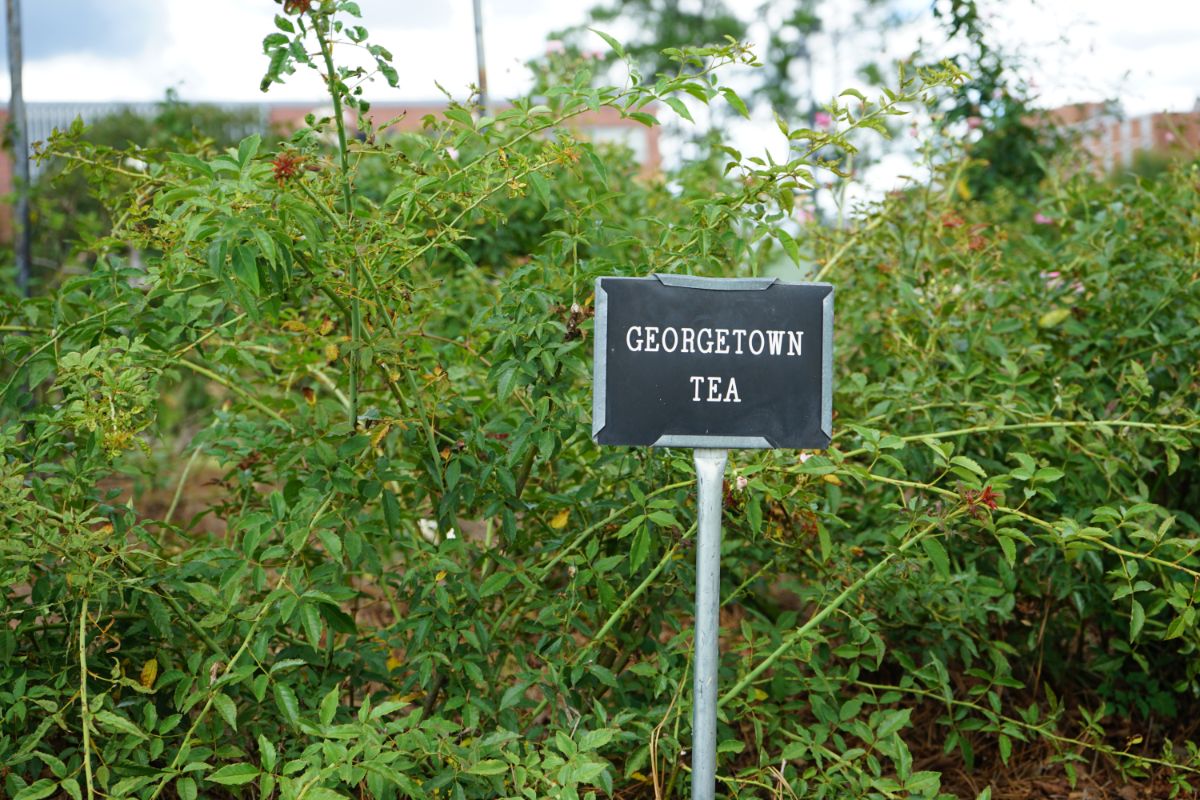
| Name: | ‘Georgetown Tea’ (1983, found rose) |
| Class: | Tea |
| Zones: | 7b to 9b |
| Size: | 3 to 5 feet |
| Fragrance: | Tea-like fragrance |
Heat-tolerant rose with double blooms. A found rose, discovered by a Texas rose wrangler in 1983 in the yard of a daycare center. Some think the rose might possibly be Mme. Lambard or Mme. Antoine Mari. However, the Earth-Kind list includes both Georgetown Tea AND Mme. Antoine Mari. Growing these two roses almost side by side over the course of years would probably shoot down that notion pretty quickly.
The flowers on the Georgetown Tea are dark salmon pink lightly fragrant, and the petals roll under and make pointed tips on the flowers. It’s disease resistant, drought tolerant, and looks lovely if grown in a large mass with drifts of bright blossoming annuals and perennials in front of them.
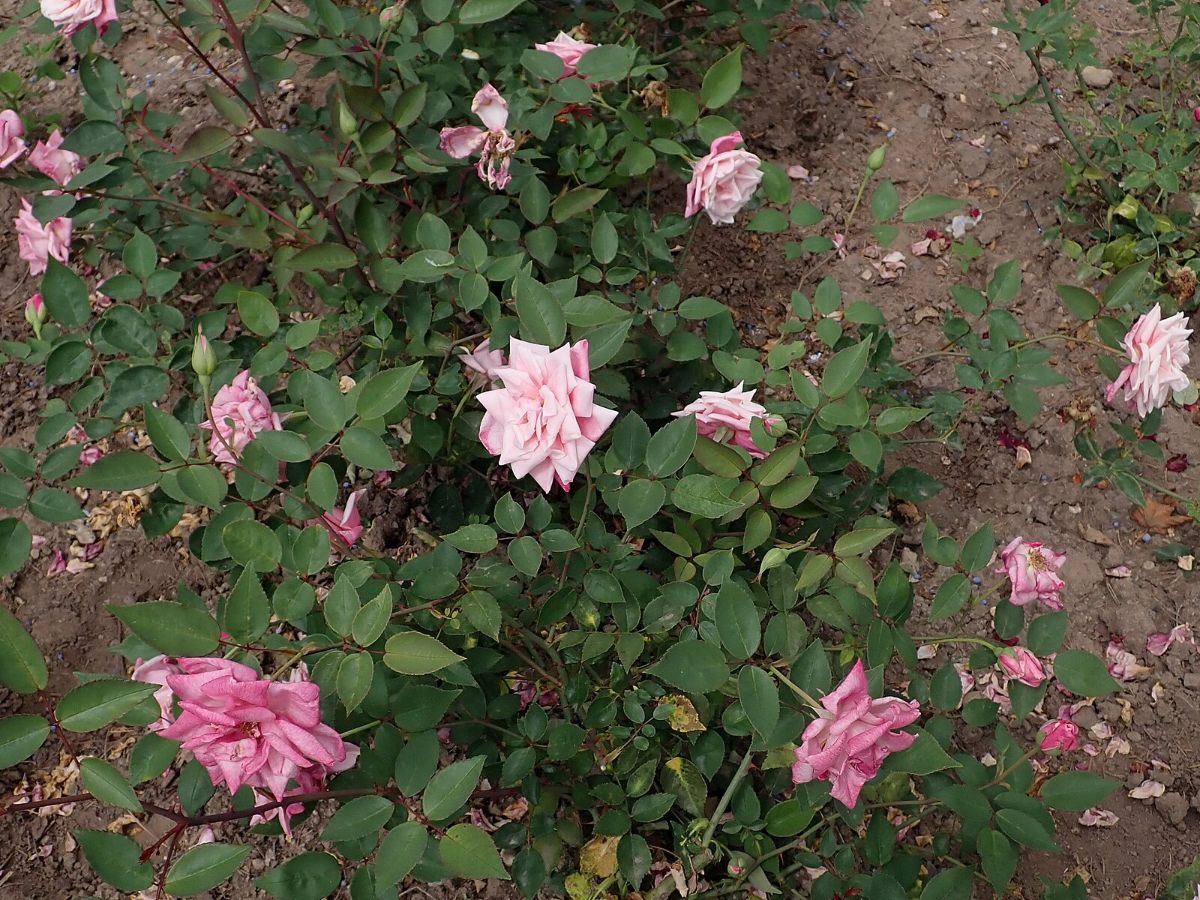
| Name: | Mme. Antoine Mari (1901) |
| Class: | Tea |
| Zones: | 6b – 9b |
| Size: | 4 to 7 feet tall; width is 5 to 7 feet. Other sources say 6 feet tall and wide |
| Fragrance: | Mild fragrance |
A vigorous, drought-resistant rose, not widely known. It blooms continually from spring to fall, even when the spring and summer are unseasonably cool.
Mme. Antoine Mari occasionally will outgrow the space you give it, but if you have to prune it back hard, it bounces back pretty quickly and forgives you. Be sure to allow for plenty of space for this rose to grow. It will need some winter protection north of zone 6, as it can be killed back to the roots by severe temperature plunges. To be sure, three inches of mulch around any rose is good for the rose and good for the ground as well.
Flowers are lovely when cut and put into a vase.
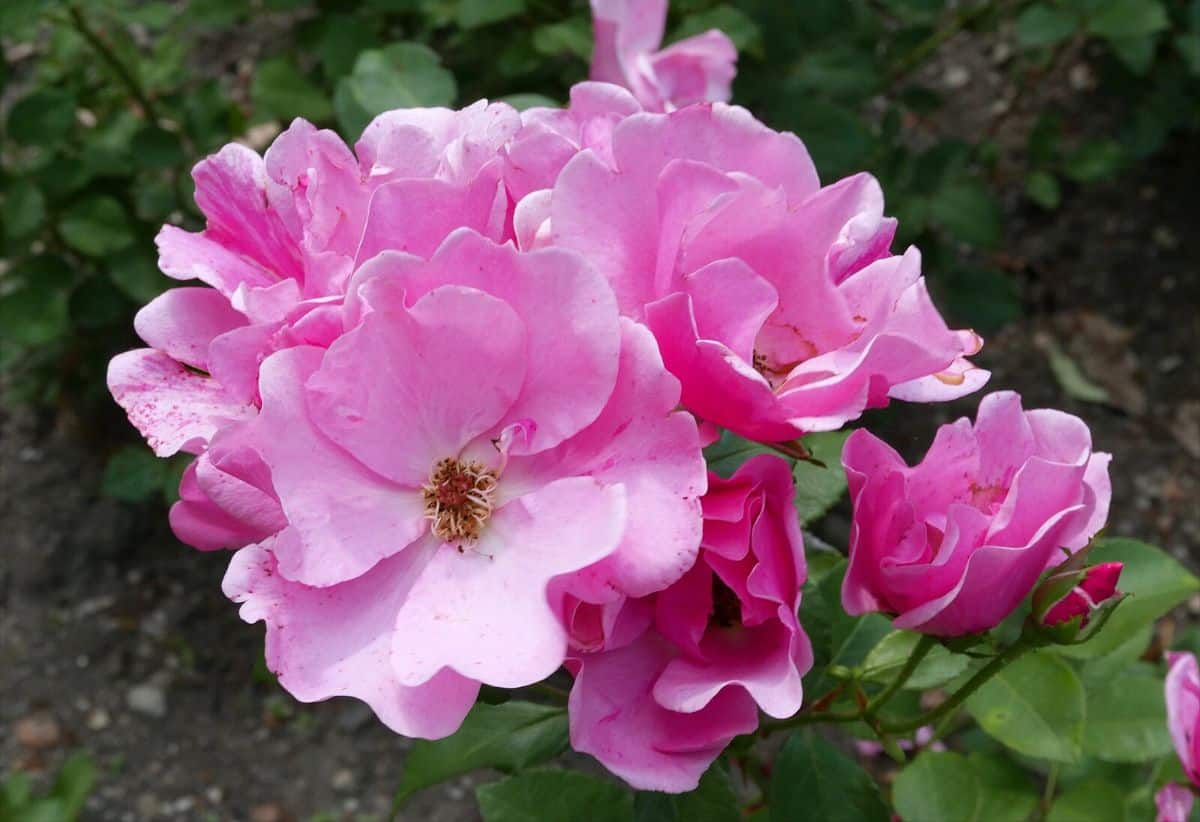
| Name: | Else Poulsen (1925) |
| Class: | Floribunda or hybrid Polyantha |
| Zones: | 6b and warmer |
| Size: | 3 to 5’ tall, 3 to 4’ wide |
| Fragrance: | Mild |
Also called Joan Anderson.
Else Poulsen is a Danish-bred rose that sports beautiful clusters of ruffled pink flowers. This free-flowering rose blooms constantly throughout the growing season, starting early in spring. She’ll even bloom in summer while other hybrid teas conk out and stop flowering. Lovely, dark green foliage that resists insects and diseases. Pest resistant and very cold-hardy.
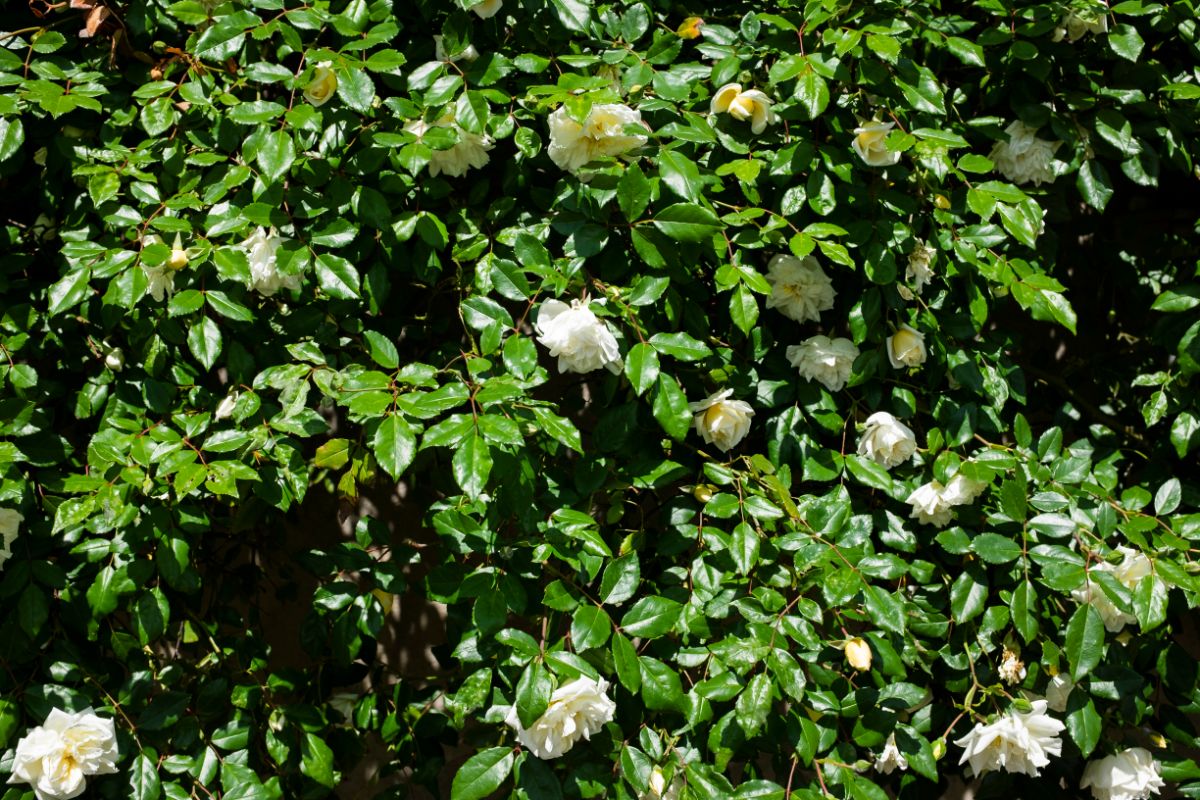
| Name: | Mrs. Dudley Cross (1907) |
| Class: | Tea rose |
| Zones: | 7b to 9b |
| Size: | Space 8 feet from centers |
| Fragrance: | Moderate |
A sport of Marie Van Houtte.
Mrs. Dudley Cross is a rose that you will swoon over for the delicacy of its fragrant blossoms and how good she looks.
Mrs. Dudley Cross was declared to be “The Yellow Rose of Texas” in the 1980s. This rose is almost thornless, and her foliage is resistant to blackspot.
The roses, which are a remarkable blend of pink and pale yellow, are large and abundant during the growing season. They grow well in poor soil, though naturally, they’ll prosper more in soil that has been amended with organic material like compost and given a thick layer of organic mulch.
If you don’t spray, she will get blackspot in some areas of the country, though in Texas, she doesn’t have any trouble with it.
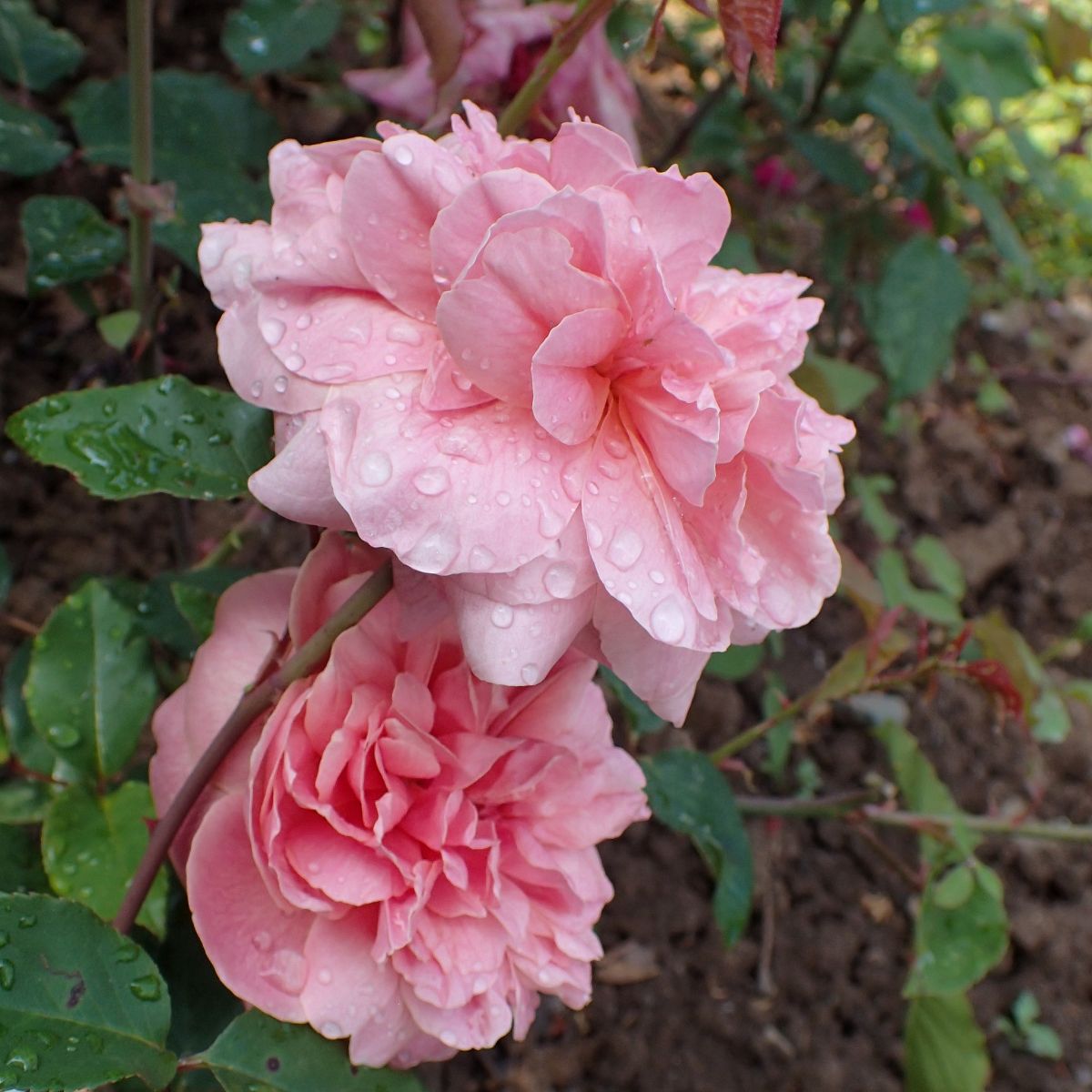
| Name: | Monsieur Tillier (1891) |
| Class: | Tea rose |
| Zones: | 6b through 9b |
| Size: | 5 to 6 feet tall and wide |
| Fragrance: | Moderate |
Also called Monsieur William Tillier.
The carmine-red flowers are surprisingly small! On this rose, I expected big manly-man flowers, not these darling little flowers. But they will cover the rosebush beautifully. Monsieur Tillier has flowers that are an orange-pink color, and the rose blooms all through the growing season. Makes excellent cut flowers. Can be grown as a large shrub or hedge in the landscape.
Fertilize with cottonseed or alfalfa meal in spring and again in fall. Water weekly when there isn’t enough rainfall to keep it growing.
Mannerly Climbers
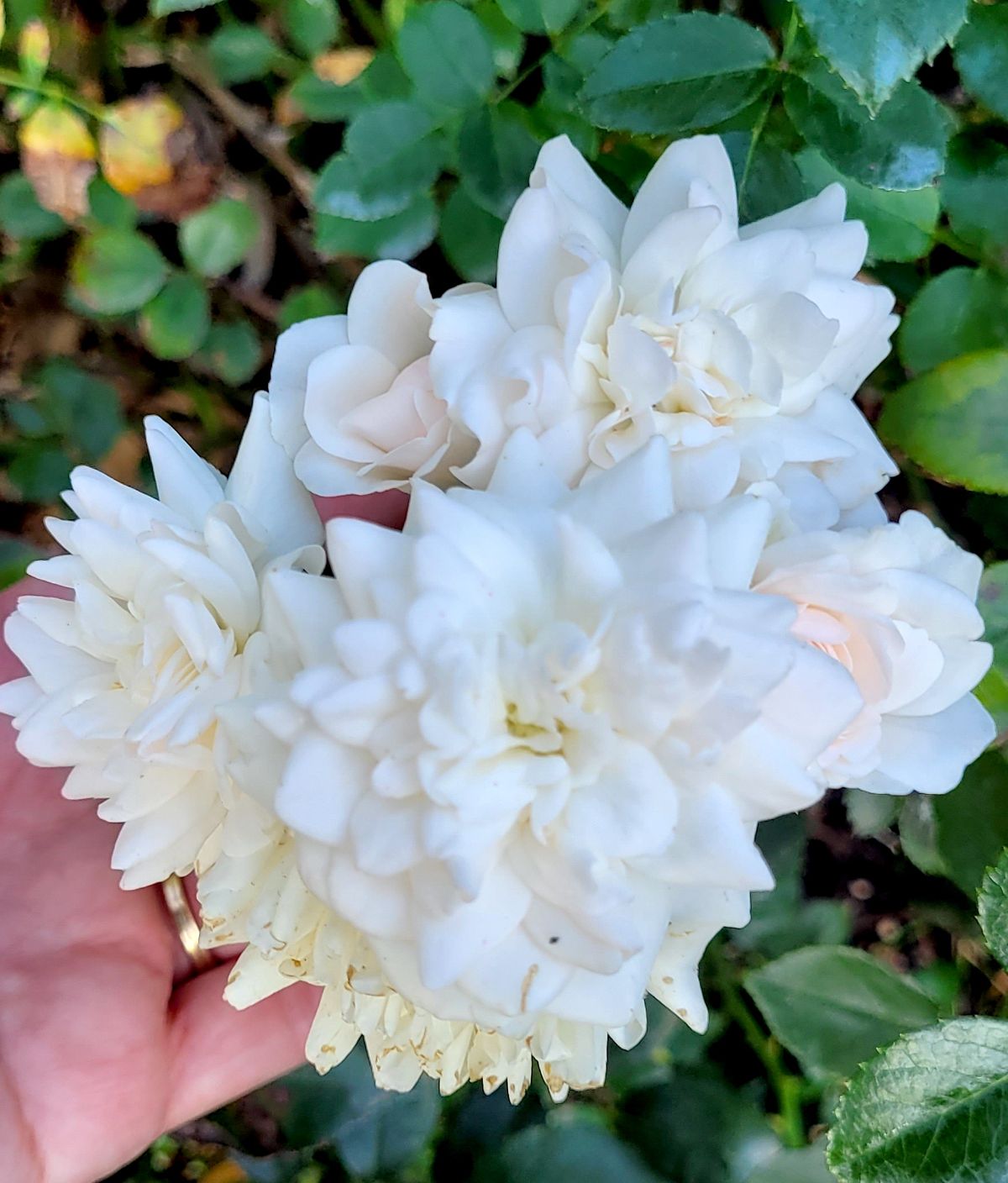
| Name: | Sea Foam (1964) |
| Class: | Shrub |
| Zones: | 4-9 |
| Size: | 8’ tall, 4’ wide, plant 6 feet apart on centers |
| Fragrance: | Minimal |
Sea Foam was one of the earliest landscape roses, a vigorous plant with glossy foliage (glossy foliage seems to be good at repelling diseases like powdery mildew).
Hundreds of small white blossoms continuously cover the plant, blooming from early summer into fall. The blossoms seem to glow in the night garden.
Sea Foam is quick to get established if it’s planted where it gets at least 6 hours of full sun daily. It’s very winter hardy.
Instead of growing up, Sea Foam grows out, sending out creeping vines that cover the ground like the arms of an octopus.
This rambling rose can be grown as a ground cover or hedge, as well as a short climbing rose. Wrap Sea Foam around pillars, up trellises, and along fences.
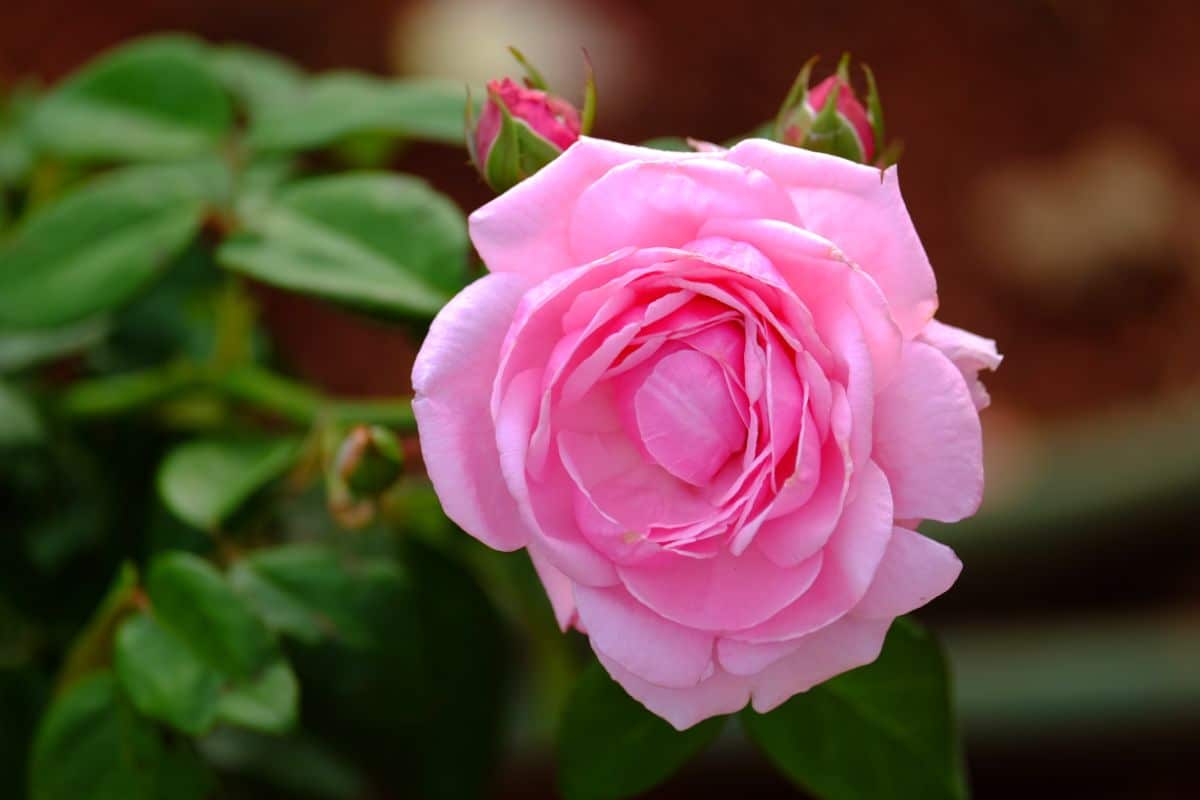
| Name: | ‘Climbing Pinkie’ (1952) |
| Class: | Climbing Polyantha |
| Zones: | 6-9 |
| Size: | 10 feet tall and wide |
| Fragrance: | Light fragrance |
Easy-to-manage climbing rose, though now and then she loves to eat fences. Climbing Pinkie blooms beautifully with medium pink blossoms in hanging clusters. She’s supposed to be thornless, but sometimes, she does have thorns. Climbing Pinkie is a fast grower and looks beautiful when grown down a steep incline or cascading over a rocky wall. Can be used as a tall hedge or screen.
Vigorous Climbers

| Name: | New Dawn (1930) |
| Class: | Large-flowered climber |
| Zones: | 5b through 9b |
| Size: | 10 to 20 feet tall; up to 8 feet wide |
| Fragrance: | Delightful apple fragrance |
Also known as The New Dawn and Everblooming Dr. W. Van Fleet.
New Dawn is an old hand at holding powdery mildew and many other diseases at bay.
Give New Dawn a lot of space so she can grow. If she’s squeezed into a little space, she’ll pop out like a jack-in-the-box.
Plant her over a trellis or arbor and use zip ties to hold her canes in place. (Zip them loosely so her canes have room to move.) If you have a nosy neighbor, put up a big, sturdy fence and let New Dawn sprawl across it. She’ll repel powdery mildew and blackspot while pouring out a profusion of fragrant, white roses.
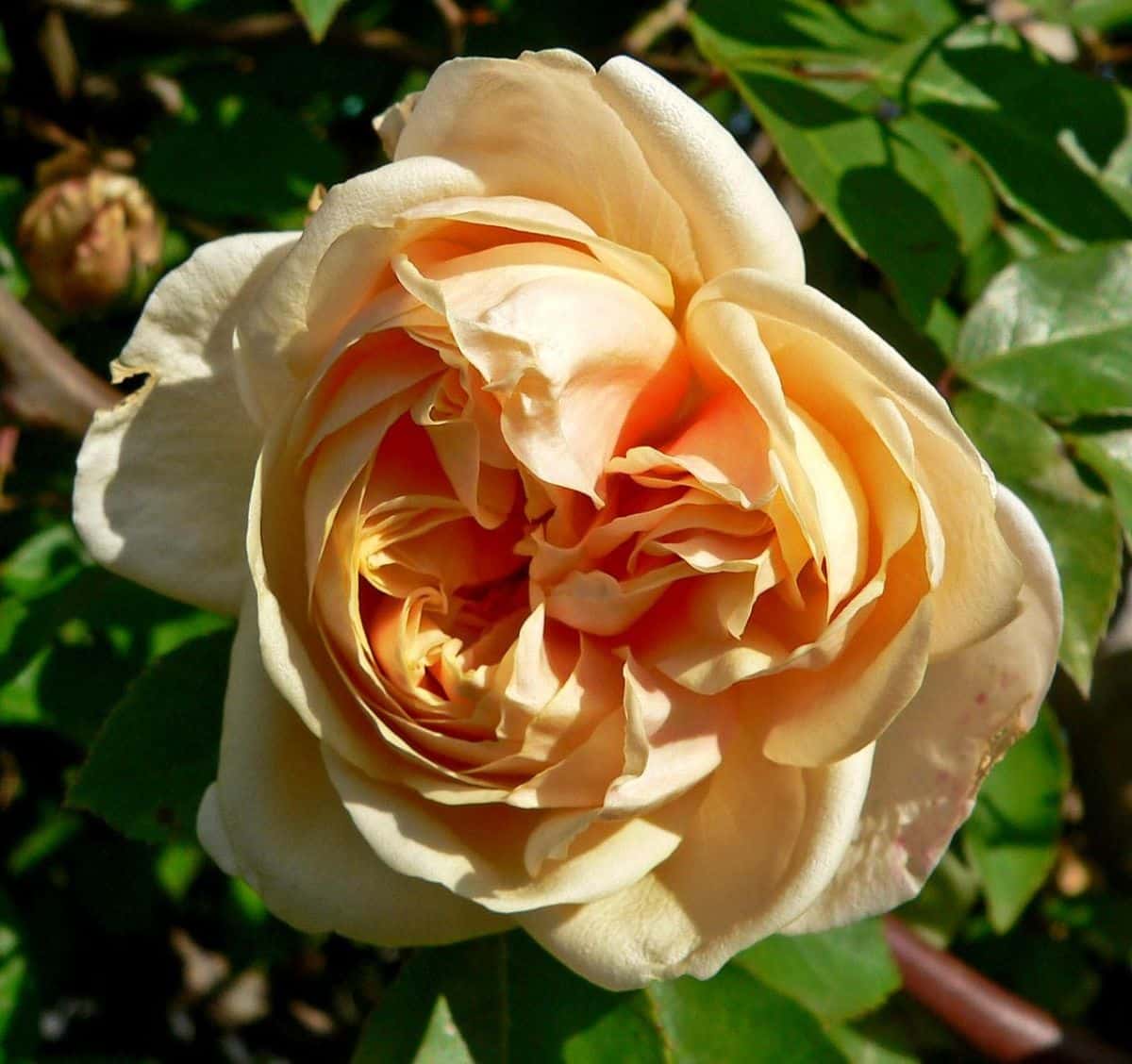
| Name: | Rêve d’Or (1882) |
| Class: | Yellow Noisette |
| Zones: | 6b to 9b |
| Size: | 10 to 18’ tall and 6 to 8 feet wide |
| Fragrance: | Moderate |
Also known as Climbing Safrano, Condesa da Foz, and Golden Chain.
Reve d’Or has deep yellow flowers with copper shading. These fragrant flowers will bloom in abundant flushes throughout the year. A very vigorous and healthy rose! Grow it in light shade! Grow it up a tree! It resists powdery mildew and other fungal diseases, and its apricot flowers are large and stunning.
The Earth-Kind Rose List Keeps Getting Longer – Thank Goodness
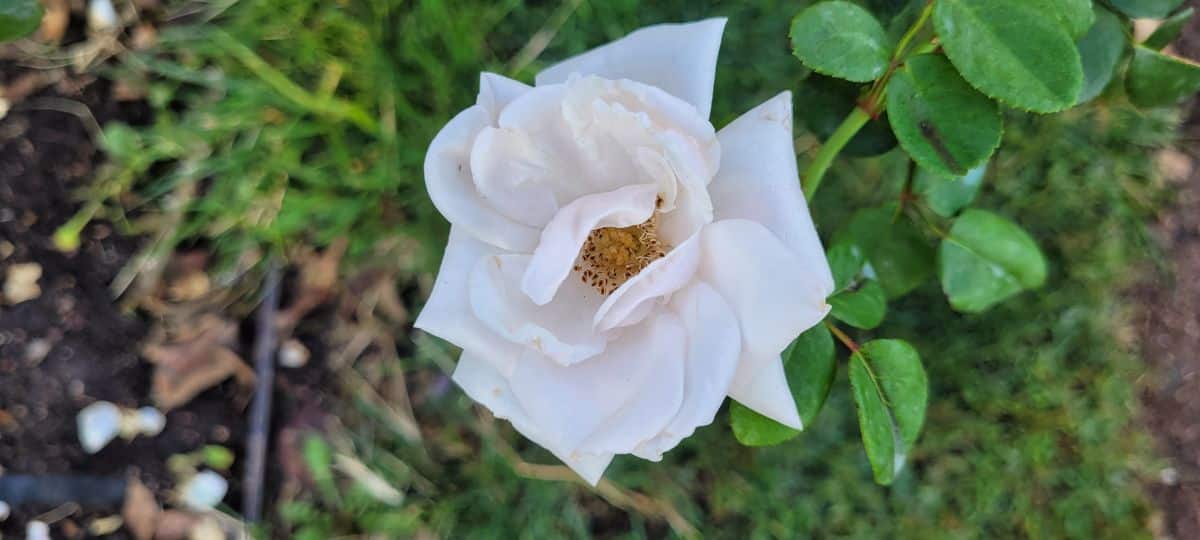
The Earth-Kind research for successful rose varieties is continuing all around the world, with trial gardens in all kinds of different climates. Now, rosarians are going to have excellent local roses because of these trials. It’s going to be great.
Sustainable and eco-friendly rose gardening practices are finally getting their day in the sun. Being able to choose expert-tested roses for a low-maintenance, eco-friendly garden is now something that almost everybody can do.

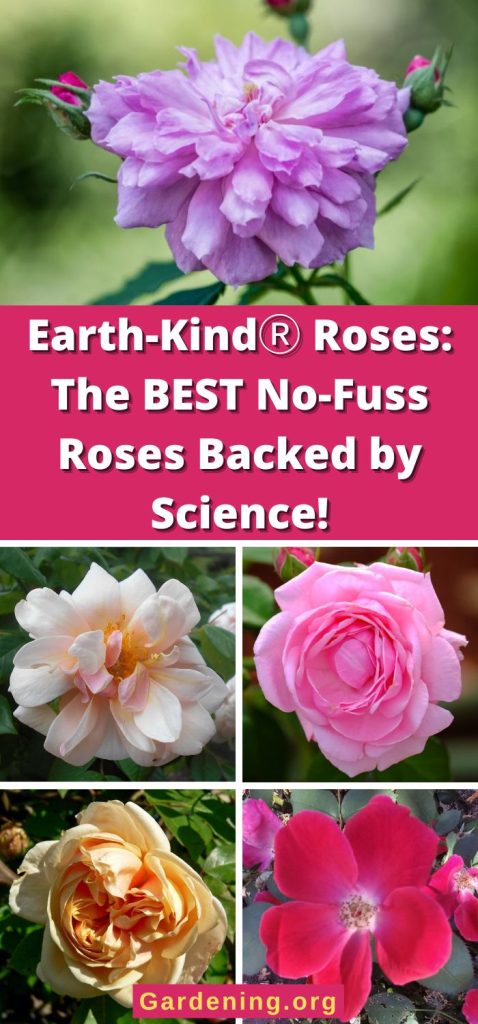
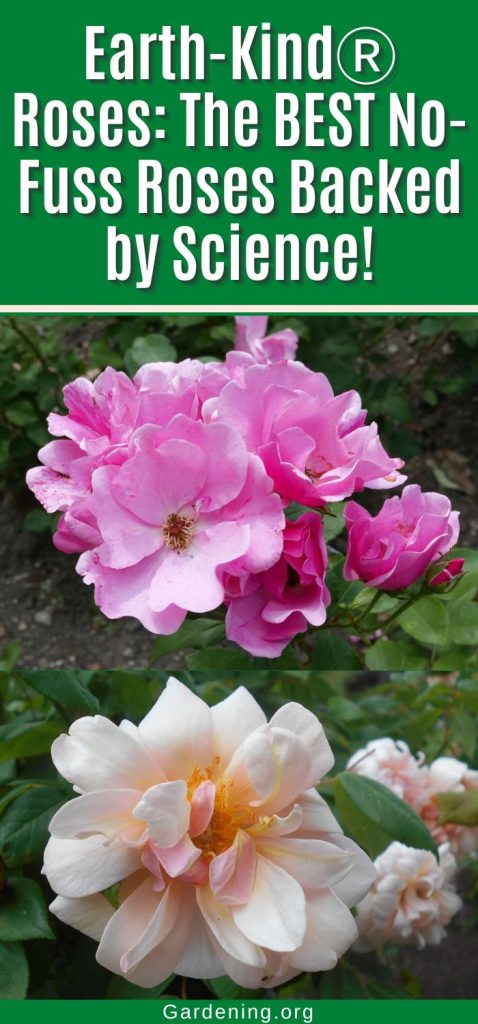
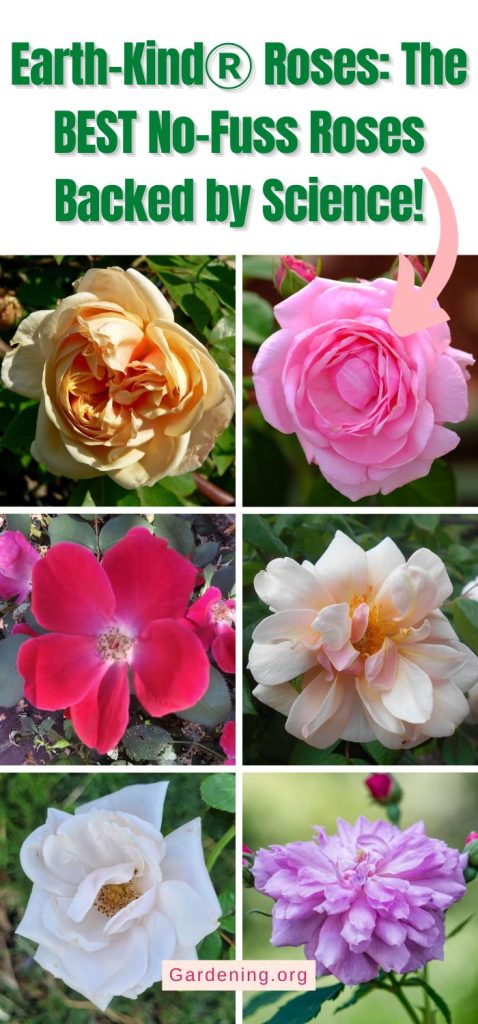
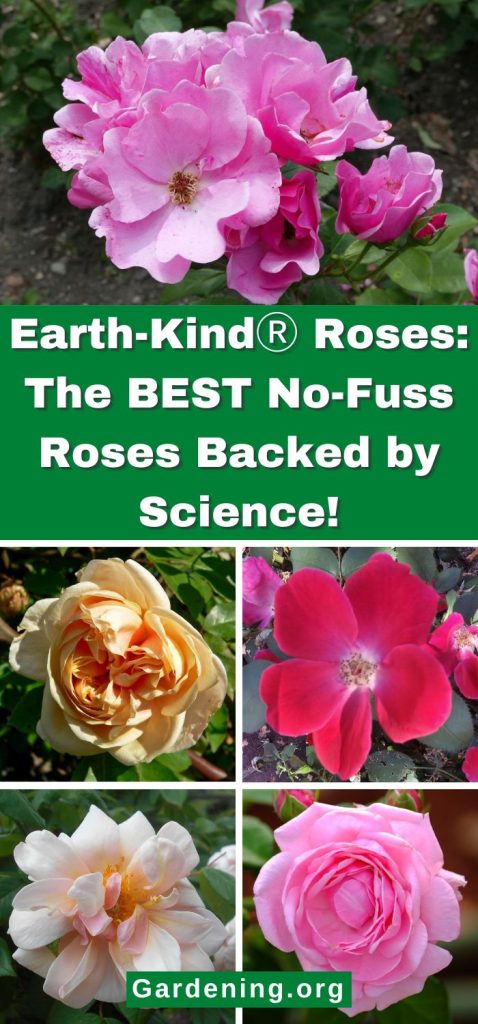

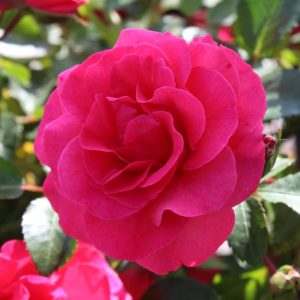
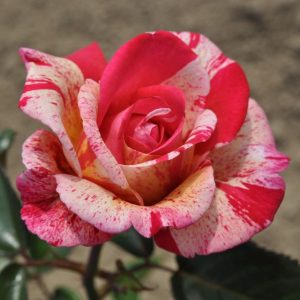

Leave a Reply